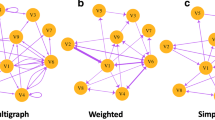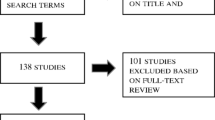Abstract
The focus of this study is to explore the advances that Social Network Analysis (SNA) can bring, in combination with other methods, when studying Networked Learning/Computer-Supported Collaborative Learning (NL/CSCL). We present a general overview of how SNA is applied in NL/CSCL research; we then go on to illustrate how this research method can be integrated with existing studies on NL/CSCL, using an example from our own data, as a way to synthesize and extend our understanding of teaching and learning processes in NLCs. The example study reports empirical work using content analysis (CA), critical event recall (CER) and social network analysis (SNA). The aim is to use these methods to study the nature of the interaction patterns within a networked learning community (NLC), and the way its members share and construct knowledge. The paper also examines some of the current findings of SNA analysis work elsewhere in the literature, and discusses future prospects for SNA. This paper is part of a continuing international study that is investigating NL/CSCL among a community of learners engaged in a master’s program in e-learning.
Similar content being viewed by others
References
Anderson, T., Rourke, L., Garrison, D. R., & Archer, W. (2001). Assessing teaching presence in a computer conference context. Journal of Asynchronous Learning Networks, 5(2), 1–17.
Banks, S., Goodyear, P., Hodgson, V., & McConnell, D. (2003). Introduction to the special issue on advances in research on networked learning. Instructional Science, 31(1–2), 1–6.
Beck, R. J., Fitzgerald, W. J., & Pauksztat, B. (2003). Individual behaviours and social structure in the development of communication networks of self-organizing online discussion groups. In B. Wason, S. Ludvigson, & U. Hoppe (Eds.), Designing for change in networked learning. Proceedings of the international conference on computer support for collaborative learning 2003 (pp. 313–322). Dordrecht: Kluwer.
Borgatti, S. P., Everett, M. G., & Freeman, L. C. (2000). Ucinet 5.0 (Version 5.4) [windows]. Natrick: Analytic technologies.
Bryman, A. (2004). Social research methods. Oxford: Oxford University Press.
Chi, M. T. H. (1997). Quantifying qualitative analyses of verbal data: A practical guide. The Journal of the Learning Sciences, 6(3), 271–315.
Cho, H., Stefanone, M., & Gay, G. (2002). Social information sharing in a CSCL community. Paper presented at the CSCL 2002, Boulder CO.
Crook, C. (1994). Computers and the collaborative experience of learning. London: Routledge.
Daradoumis, T., Martinez-Mones, A., & Xhafa, F. (2004). An integrated approach for analysing and assessing the performance of virtual learning groups. In G. de Vreede, L. A. Guerrero, & G. M. Raventós (Eds.), Lecture notes in computer science (lncs 3198) (pp. 289–304). Berlin Heidelberg New York: Springer.
de Laat, M. (2006). Networked learning. Apeldoorn: Politie Academy.
de Laat, M. F., & Lally, V. (2003). Complexity, theory and praxis: Researching collaborative learning and tutoring processes in a networked learning community. Instructional Science, 31(1–2), 7–39.
de Laat, M. F., & Lally, V. (2004). It’s not so easy: Researching the complexity of emergent participant roles and awareness in asynchronous networked learning discussions. Journal of Computer Assisted Learning, 20(3), 165–171.
Denzin, K., & Lincoln, S. (2000). Handbook of qualitative research (2nd edn.).
Dillenbourg, P. (1999). What do you mean by collaborative learning? In P. Dillenbourg (Ed.), Collaborative learning: Cognition and computational approaches (pp. 1–16). Amsterdam: Pergamon.
Gunawardena, C. N., Lowe, C. A., & Anderson, T. (1997). Analysis of global online debate and the development of an interaction analysis model for examining social construction of knowledge in computer conferencing. Journal of Educational Computing Research, 17(4), 397–431.
Hakkinen, P., Jarvela, S., & Makitalo, K. (2003). Sharing perspectives in virtual interaction: Review of methods of analysis. In B. Wason, S. Ludvigson & U. Hoppe (Eds.), Designing for change in networked learning. Proceedings of the international conference on computer support for collaborative learning 2003 (pp. 395–404). Dordrecht: Kluwer.
Hara, N., Bonk, C. J., & Angeli, C. (2000). Content analyses of on-line discussion in an applied educational psychology course. Instructional Science, 28(2), 115–152.
Haythornthwaite, C. (2001). Exploring multiplexity: Social network structures in a computer-supported distance learning class. The Information Society, 17, 211–226.
Haythornthwaite, C. (2002). Building social networks via computer networks: Creating and sustaining distributed learning communities. In K. A. Renninger & W. Shumar (Eds.), Building virtual communities: Learning and change in cyberspace (pp. 159–190). Cambridge: Cambridge University Press.
Henri, F. (1992). Computer conferencing and content analysis. In A. R. Kaye (Ed.), Collaborative learning through computer conferencing. London: Springer.
Howell-Richardson, C., & Mellar, H. (1996). A methodology for the analysis of patterns of participation within computer mediated communication courses. Instructional Science, 28, 47–69.
Light, P., & Light, V. (1999). Analysing asynchronous learning interactions: Computer-mediated communication in a conventional undergraduate setting. In K. Littleton & P. Light (Eds.), Learning with computers: Analysing productive interaction (pp. 162–172). London: Routledge.
Martinez, A., Dimitriadis, Y., Rubia, B., Gomez, E., & de la Fuente, P. (2003). Combining qualitative evaluation and social network analysis for the study of classroom social interactions. Computers & Education, 41(4), 353–368.
McConnell, D. (1999). Examining a collaborative assessment process in networked lifelong learning. Journal of Computer Assisted Learning, 15(3), 232–243.
Newman, D. R., Johnson, C., Webb, B., & Cochrane, C. (1999). Evaluating the quality of learning in computer supported co-operative learning. Journal of the American Society for Information Science, 48(6), 484–495.
Nurmela, K., Lehtinen, E., & Palonen, T. (1999). Evaluating CSCL log files by social network analysis. Proceedings of CSCL 1999 (December 1999), Palo Alto, CA.
Pilkington, R. M., & Walker, S. A. (2003). Facilitating debate in networked learning: Reflecting on online synchronous discussion in higher education. Instructional Science, 31(1–2), 41–63.
Reffay, C., & Chanier, T. (2003). Social Network Analysis Used for Modelling Collaboration in Distance Learning Groups. Intelligent Tutoring Systems: 6th International Conference, ITS 2002, Biarritz, France and San Sebastian, Spain, June 2–7, 2002. Proceedings Retrieved 1 September, 2006, from http://www.springerlink.com/content/Ogfrmknm1tyh2p6k.
Reuven, A., Zippy, E., Gilad, R., & Aviva, G. (2003). Network analysis of knowledge construction in asynchronous learning networks. Journal of Asynchronous Learning Networks, 7(3), 1–23.
Scott, J. (1991). Social network analysis: A handbook. London: Sage.
Strijbos, J. (2004). The effect of roles on computer-supported collaborative learning. PhD dissertation, Open Universiteit Nederland, Heerlen.
Veldhuis-Diermanse, A. E. (2002). Csclearning? Participation, learning activities and knowledge construction in computer-supported collaborative learning in higher education. Wageningen: Grafisch Service Centrum Van Gils.
Wasserman, S., & Faust, K. (1997). Social network analysis: Methods and applications. Cambridge: Cambridge University Press.
Wegerif, R., Mercer, N., & Dawes, L. (1999). From social interaction to individual reasoning: An empirical investigation of a possible socio-cultural model of cognitive development. Learning and instruction, 9, 493–516.
Wellman, B. (2001). Computer networks as social networks. Science, 293, 2031–2034.
Author information
Authors and Affiliations
Corresponding author
Rights and permissions
About this article
Cite this article
de Laat, M., Lally, V., Lipponen, L. et al. Investigating patterns of interaction in networked learning and computer-supported collaborative learning: A role for Social Network Analysis. Computer Supported Learning 2, 87–103 (2007). https://doi.org/10.1007/s11412-007-9006-4
Received:
Revised:
Accepted:
Published:
Issue Date:
DOI: https://doi.org/10.1007/s11412-007-9006-4




